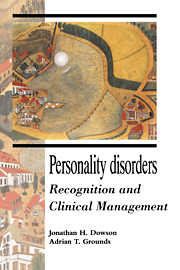8 - Group psychotherapies
from Part two - Clinical management
Published online by Cambridge University Press: 19 October 2009
Summary
Overview
Historical development
Since Moreno introduced the term ‘group psychotherapy’ in 1931, many theoretical frameworks and techniques have emerged for use in a wide variety of settings. These include the short-stay psychiatric unit, the outpatient clinic, the medium- and long-stay units of psychiatric hospitals, specialist psychiatric units for alcoholism or forensic problems, and self-help organizations (Ryle, 1976). Regular group meetings may also involve non-patients, such as trainees in those professions where increased self-awareness and an ability to communciate are particularly important.
Research in this field has been limited and, in general, theoretical considerations have determined clinical practice (Malan, 1973). Three approaches have been derived from psychoanalytic theory; the first examines the relationship of each individual patient to the group or therapist, the second is concerned with the relationship of the group as a whole to the therapist, while the third approach emphasizes treatment by the group itself, focussing on general aspects of the group such as themes, communication patterns, values and cohesiveness. In this last approach, the therapist ignores, as far as possible, his/her own relationship with individual group members or with the group as a whole. The first two strategies have been termed psychoanalysis ‘in’ groups and ‘of’ groups (Wolf & Schwartz, 1962), while the latter, the so-called group-analytic method (Foulkes & Anthony, 1965), encourages the therapeutic ingredients to be provided ‘by’ the group (de Maré & Kreeger, 1974).
- Type
- Chapter
- Information
- Personality DisordersRecognition and Clinical Management, pp. 294 - 320Publisher: Cambridge University PressPrint publication year: 1995



